When we look at old photos of devices used in the past, we are often confused by their strange designs. Some of those are so weird that their real purpose can’t be determined at first sight. Many of the photos that depict this kind of machinery do not have any captions, thus identification is even more difficult. The technological relics pictured below are from Library of Congress collections, and their correct usage has been identified. Most of them are early prototypes of devices; some of them functional, some of them suspiciously designed. Some of the machines changed so much over the years that, from a modern perspective, they are quite alien-looking. Take a look at the photos and try and guess what they really are.
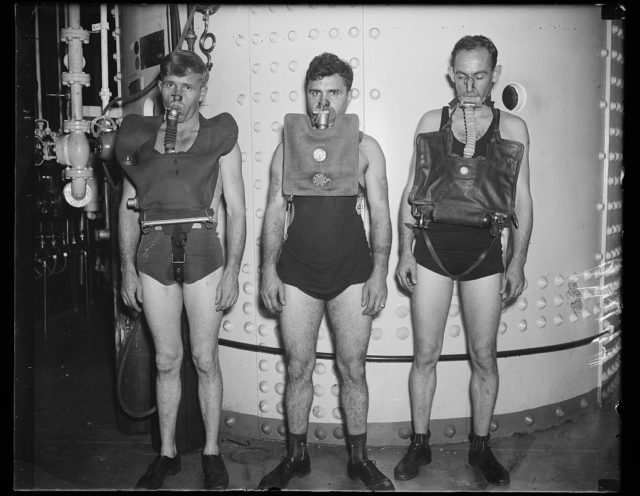
Here we can see examples of three different prototypes for underwater breathing devices. The device on the left is called “Dräger Gegenlunge,” the middle one is the “Momseng Lung” and the “Davis Submerged Escape Apparatus” is on the right. Many devices like these were prototyped in the US, most of them during WWII, and were intended to be used for self-rescue from sunken submarines. This picture was taken in 1936, probably during a test of the different models of rebreathers.
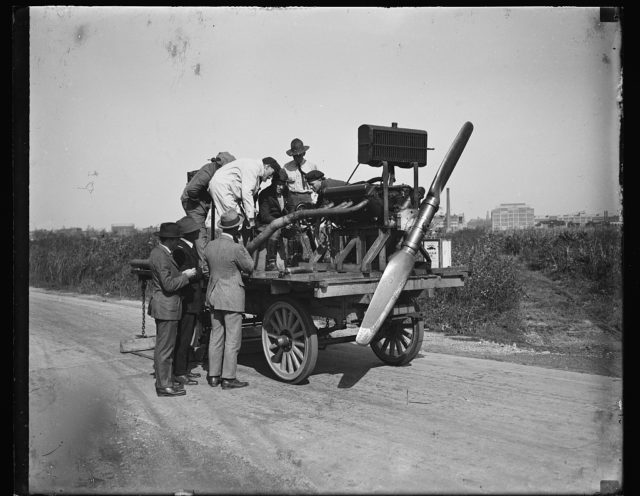
According to the description, this vehicle is identified as a “paragon adjustable and reversible aircraft propeller,” created by Spencer Heath and tested on October 11, 1922, at Bolling Field, Washington DC. Spencer Heath was a pioneer propeller maker who designed high-end propellers mainly for the use of the US Army. The picture shows his Paragon adjustable and reversible aircraft propeller attached on a 150 H.P. Hispano-Suiza Aero Engine, which was commonly used by many US military aircraft. The engine was mounted on an automobile truck trailer so that the operator could control it and move around Bolling Field during powered tests of the propeller’s performances.
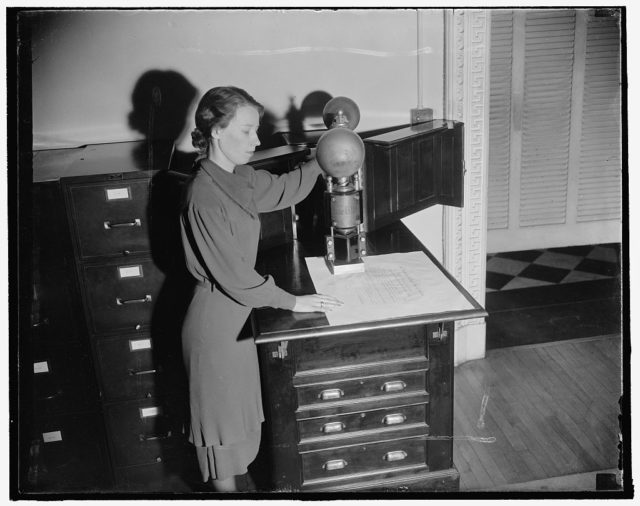
This strange looking machine is actually the press that prints the Great Seal of the United States on official documents. The picture shows the die, the counter-die, and the press. Today, the whole device is kept in a locked and guarded room at the State Department. This photo was taken in 1938. According to the description, “This is the only machine in the world which will place the seal of the United States on a document.”
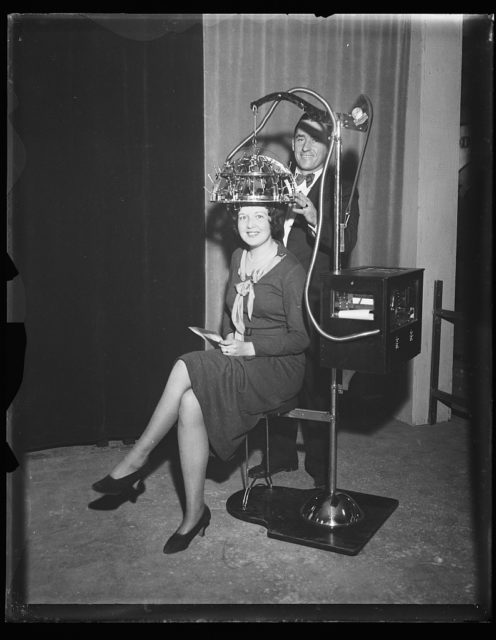
This contraption is called a Psychograph; a phrenology machine invented and marketed by Henry C. Lavery in the 1930s. The pseudoscience of phrenology and its practitioners used the psychograph to measure person’s head at 32 points, to determine the person’s supposed mental attributes on a five-point scale ranging from “deficient” to “very superior.”
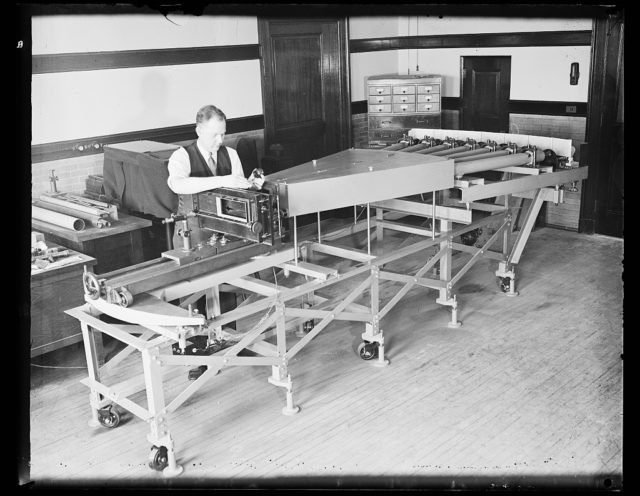
The rig that is shown here is for testing airplane lenses for cameras used in map making by the Army and Navy. The photo was taken in 1934, at the U.S. Bureau of Standards, Washington, D.C.
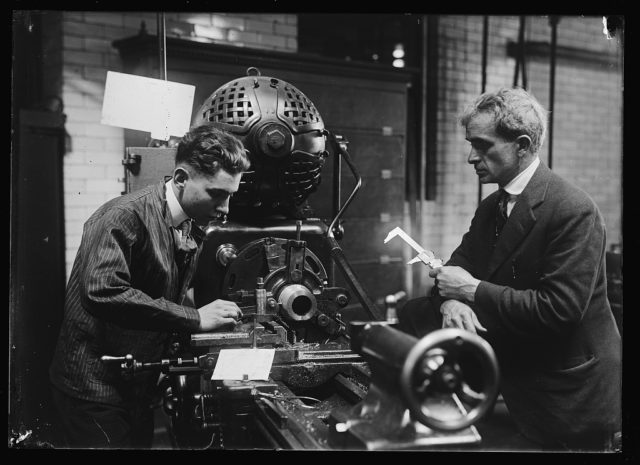
The photo was taken in 1921 in the Machine Shop at McKinley Training School, Washington, D.C. An instructor is supervising the manufacture of practice shells for the Navy. The basket weave dome in the background (that looks like it’s part of a Sci-Fi movie set) is a venting cover for the lathe electric motor.
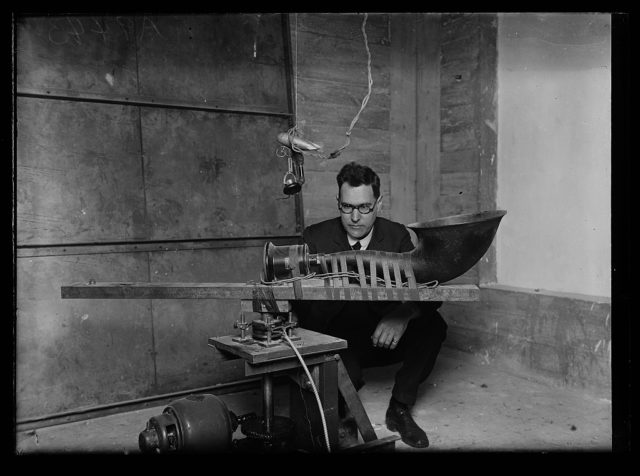
An acoustics researcher at the National Bureau of Standards, Washington, D.C., looking is observing a loudspeaker horn used in sound penetration tests. Above the horn is an opening in the ceiling in which is fitted a slab of the building material to be tested. Over the horn is hanging a telephone receiver used in testing the volume of noise. A similar receiver is hung in the room above, over the slab.
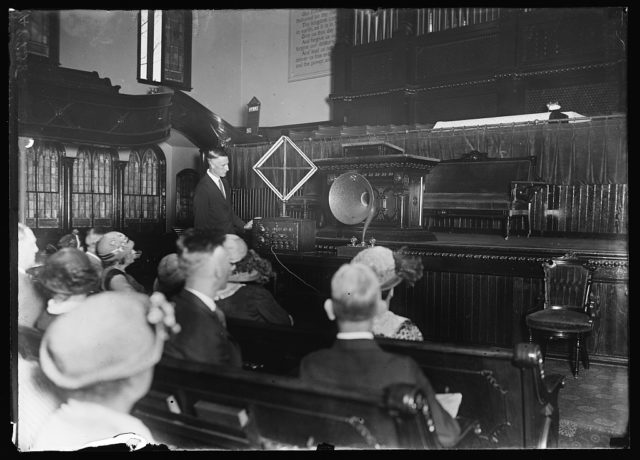
This photo from 1924 shows the usage of radio during a church sermon. On Jan 1, 1922, the New York times reported that a ” Washington Installation Will Make Sermon and Music Audible Over a 200-Mile Radius.” This is an example of a remote sermon receiver.
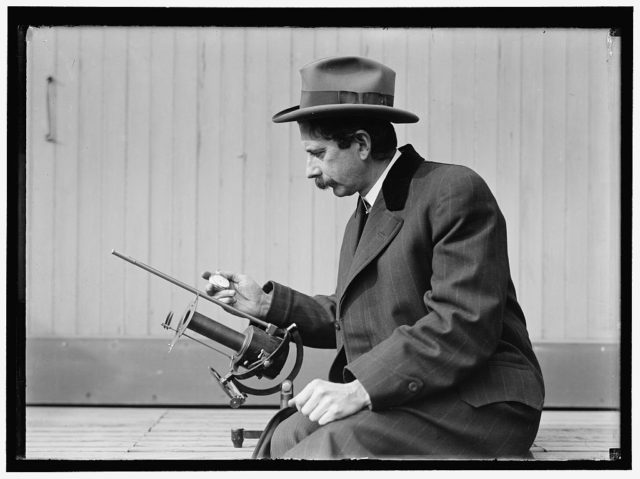
Charles Greeley Abbot, an astrophysicist and the fifth secretary of the Smithsonian Institute. In this 1913 photo, he holds his invention; a device called silver-disc pyrheliometer, which measures direct beam solar irradiance.
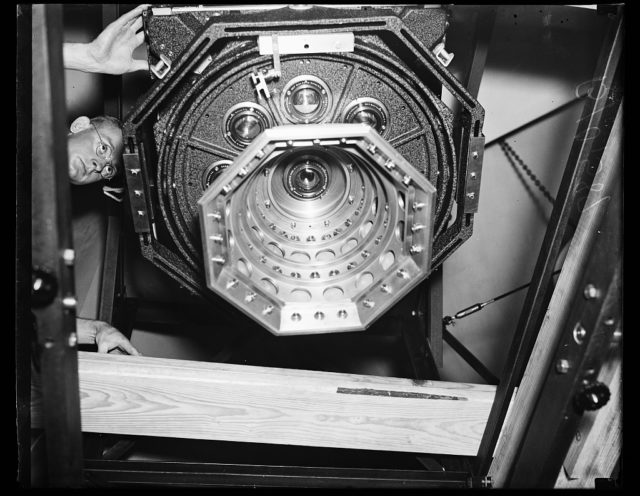
A 9-lens aerial mapping camera made by the Fairchild Aerial Camera Corp. for the U.S. Coast & Geodetic Survey. The camera was huge: weighing 750 pounds (when fully equipped) and the roll of film was 200 feet long and 23 inches wide. The photo was taken in 1936.
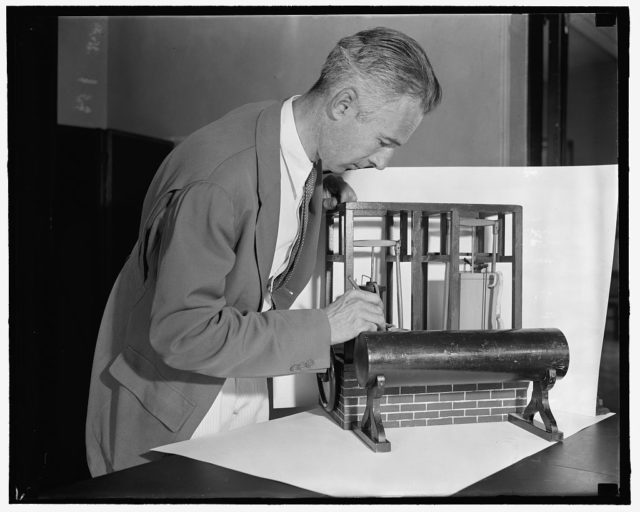
Here we have a non-working Gorrie Ice Machine patent model. The picture taken in 1938 shows a model of the first patent for a mechanical refrigerating, or ice-making machine, issued by the United States Patent in 1851. The machine was designed “to convert water into ice artificially by absorbing its heat of liquefaction with expanding air.” This is a non-functioning model that served only as a diagram.
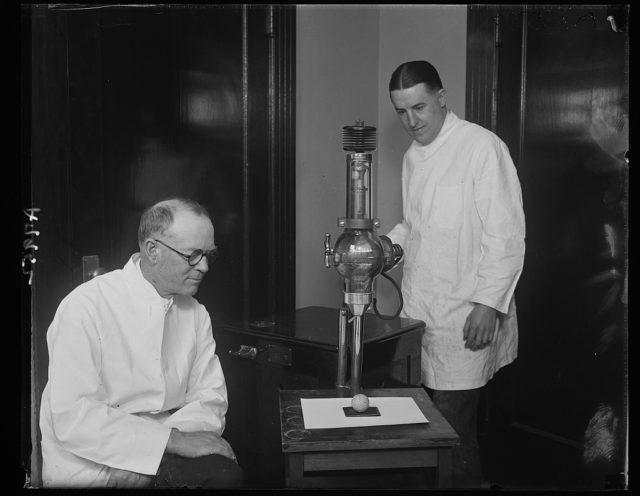
According to the description, here we see two dentists, using a dental x-ray to examine the cores of golf balls to see if they are centered. In 1924, using their dental equipment, they proved that that off-center cores in golf balls can lead to bad golf strokes.
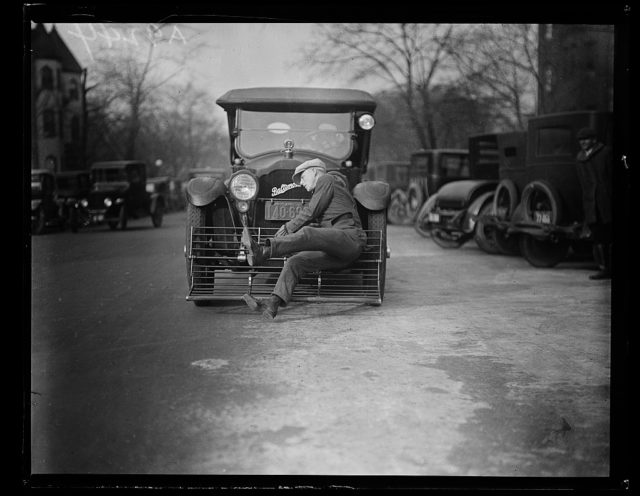
The strange scoop depicted here was an auto safety device. This is a demonstration of the contraption at work! The photo was taken around 1924.
